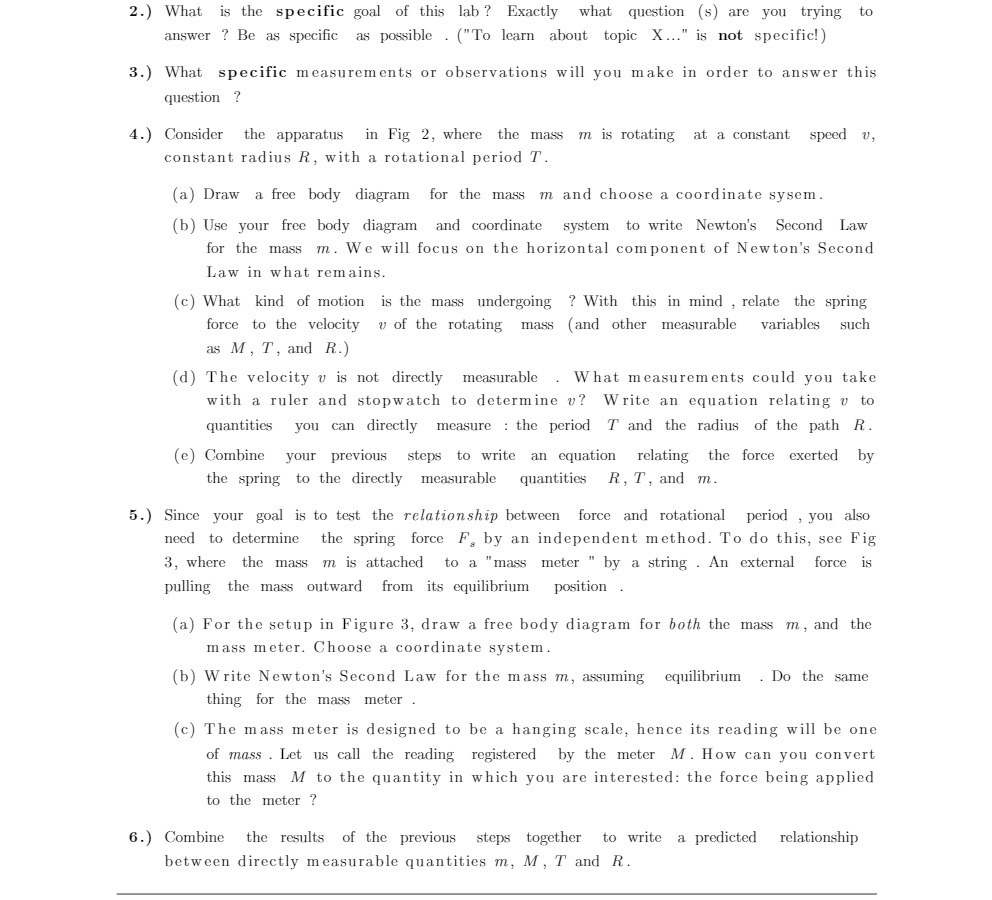2.) \"rhat is the specific goal of this lab? Exactly what question (s) are you trying to answer '? Be as specic as possible . (\"To learn about topic X...' is not specific!) 3.) What specic measurements or observations will you make in order to answer this question ? 4.) Consider the apparatus in Fig 2, where the mass m is rotating at a constant speed 1:, constant radius R, with a rotational period T. (a) Draw a free bod},r diagram for the mass m and choose a coordinate sysom. (b) Ilse your free bod},r diagram and coordinate system to write Newton's Second Law for the mass m. We will focus on the horizontal component of Newton's Second Law in what remains. (c) What kind of motion is the mass undergoing '3' 1With this in mind , relate the spring force to the velocity u of the rotating mass {and other measurable variables such as M, T, and R.) {d} The velocity 'u is not directlyr measurable . What measurements could you take with a ruler and stopwatch to determine 1;? Write an equation relating u to quantities you can directlyr measure :the period T and the radius of the path R. (e) Combine your previous steps to write an equation relating the force exerted by the spring to the directly measurable quantities R, T, and mi 5.) Since your goal is to test the relationship between force and rotational period ,you also need to determine the spring force F, by an independent method_ To do this, see Fig 3, where the mass m is attached to a \"mass meter " by a string . An external force is pulling the mass outward from its equilibrium position {a} For the setup in Figure 3, draw a free body diagram for both the mass m, and the mass meter; Choose a coordinate system. {b} Write Newton's Second Law for the mass m, assuming equilibrium . Do the same thing for the mass meter . (c) The mass meter is designed to be a hanging scale, hence its reading will be one of mass . Let us call the reading registered by the meter M. How can you convert this mass M to the quantity in which you are interested: the force being applied to the meter ? 6.) Combine the results of the previous steps together to write a predicted relationship between directly measurable quantities m, M, T and R







